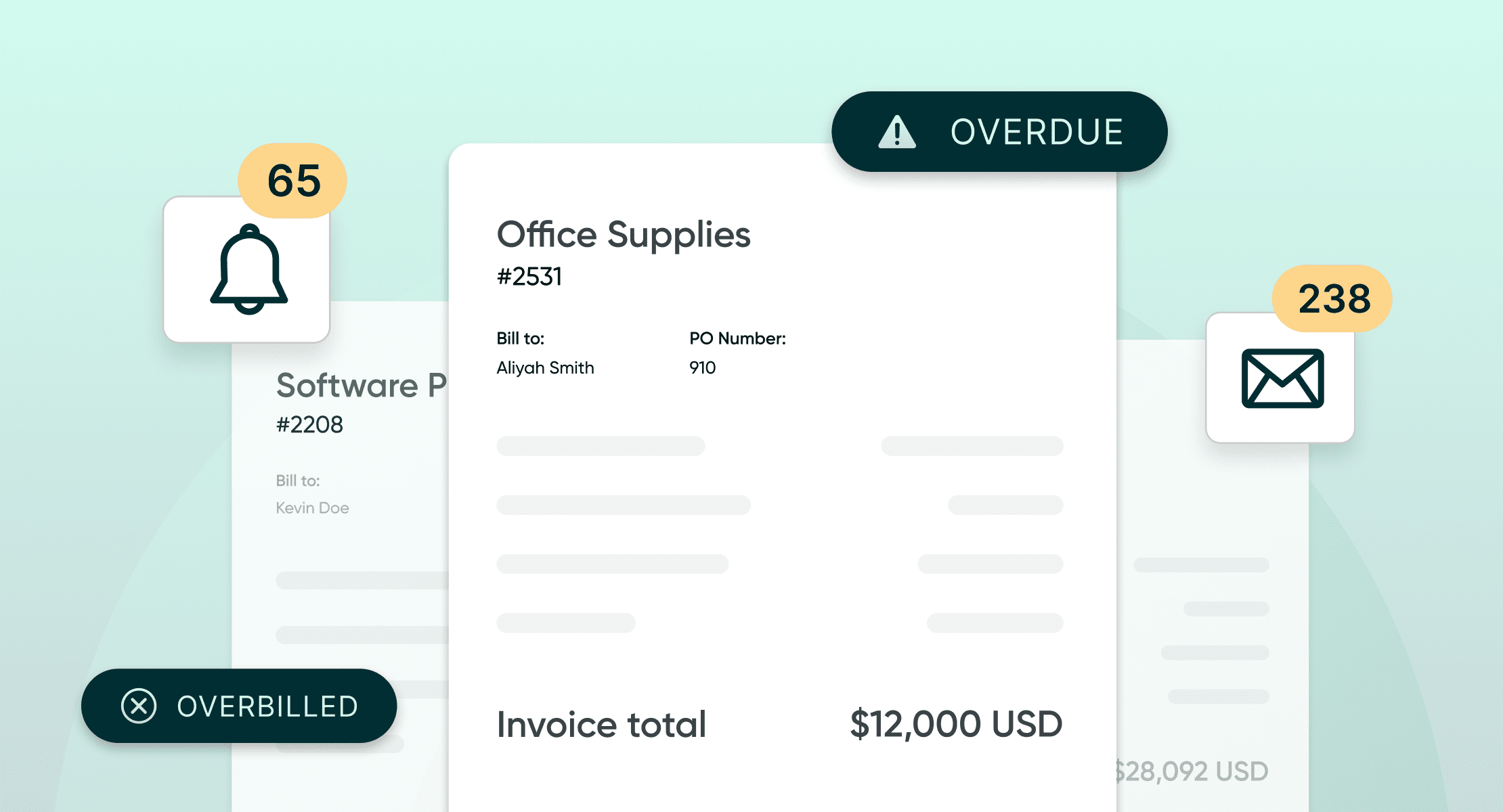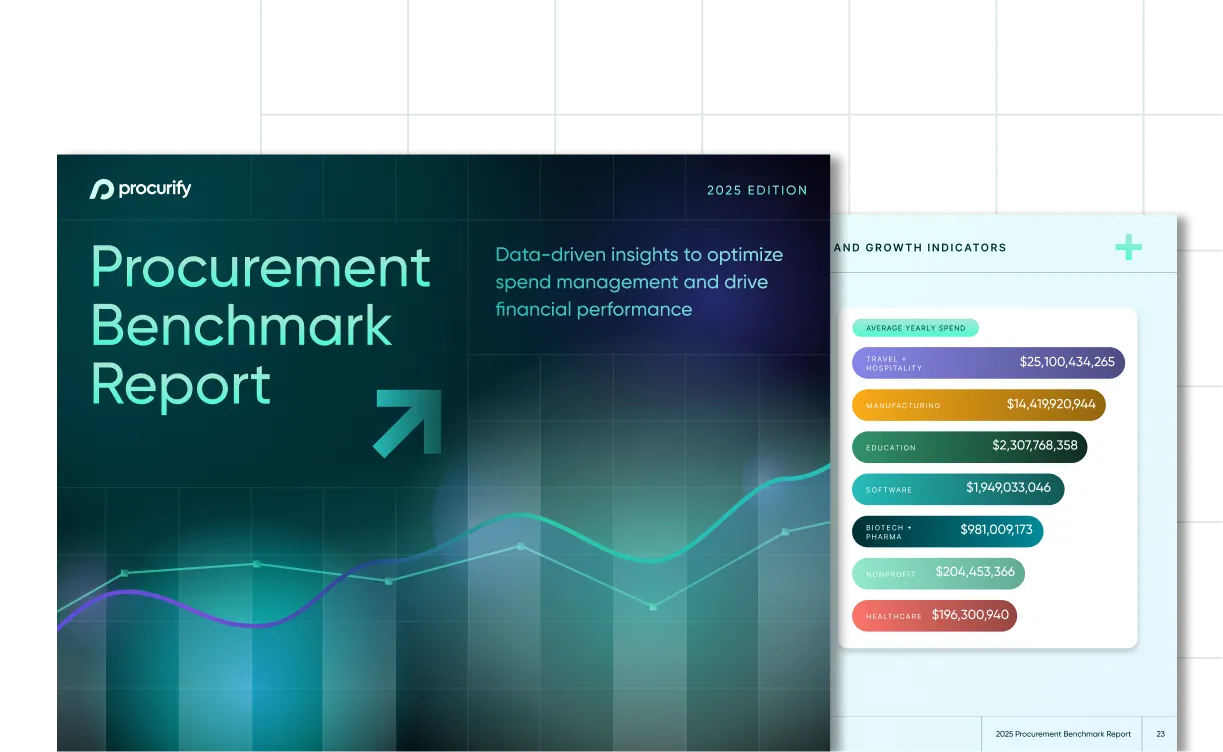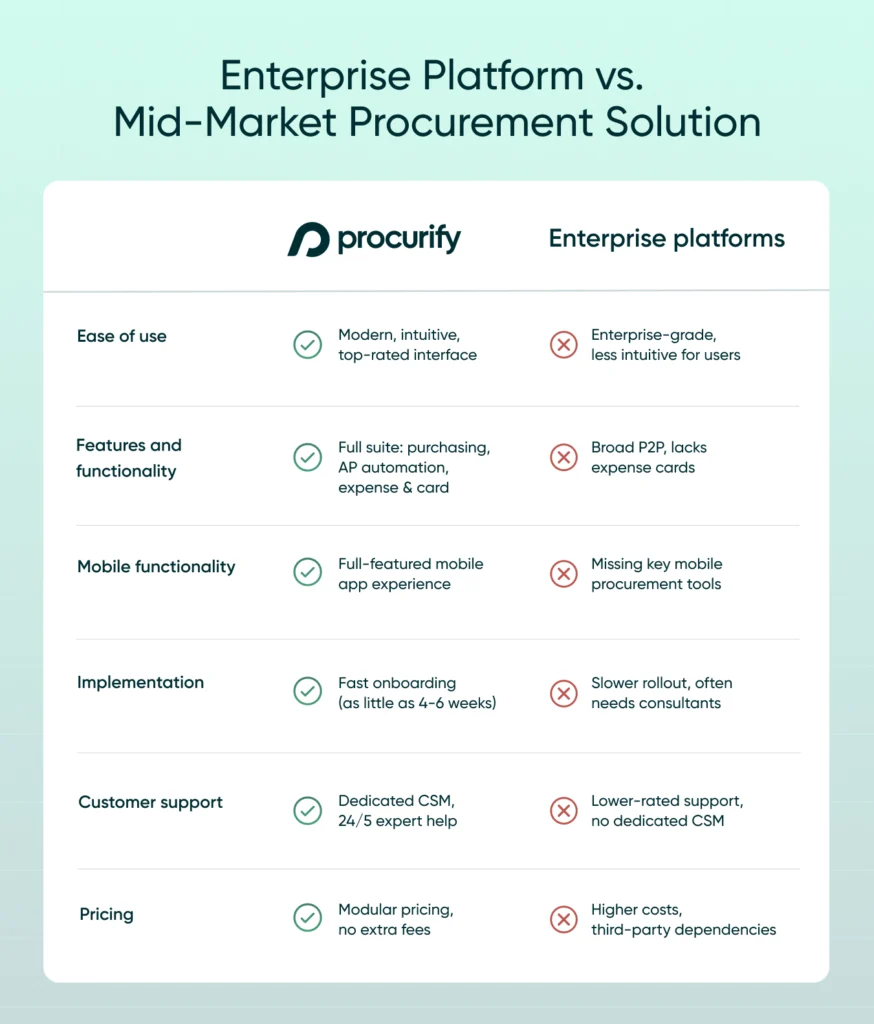
Why Mid-Market Finance Teams Are Moving On from Coupa
You evaluated the options. You bought into a leading (expensive) procurement platform, the one with enterprise credentials, a long feature list, and promises of end-to-end control. It looked great on paper, you got buy-in from the C-suite, and everyone was thrilled.
But now? You’re months into implementation, adoption is stalling, your team is frustrated, the system is not delivering what you need, and support has disappeared.
You’re not the problem—your procurement system is. Most enterprise-grade platforms, like Coupa, are good at what they do, but they were built for Fortune 500 companies. Organizations that have deep budgets, large IT teams, and extensive procurement departments, not for lean, fast-moving organizations like yours.
That’s why more procurement professionals in small and medium-sized enterprises are actively searching for Coupa alternatives. They need tools that are easy to launch, don’t require outside consultants to maintain, and are simple enough for teams to actually use.
If this sounds familiar, you’re not alone. In the sections below, we’ll walk through the hidden costs of overbuilt procurement platforms, what to look for in a better fit, and how mid-sized procurement leaders are leading the shift.
Questions to ask if you are looking to move away from Coupa
If you’re wondering whether it’s time to make a change, ask yourself:
- Is your team working around your procurement system, rather than through it?
- Are approvals delayed because no one understands the workflow?
- Are you still manually chasing receipts, invoices, or purchases?
- Are you paying for features your team doesn’t use?
- Do you dread making changes because it’s so hard to update the system?
- Is procurement software adoption lower than expected?
- Are you missing the customer support you need?
- Do you have to grow into it to appreciate the value?
- Are you limited by the lack of mobility?
If the answer is yes to even two of these, your system may be costing more than it’s worth and it may not be the right fit.
The hidden costs of overbuilt procurement platforms
Procurement software comes with a price tag, but some of the most frustrating costs don’t show up until implementation or after go-live. You’ve probably felt them: a much longer implementation project than planned, requests that stall, teams who stop using the system, and manual workarounds that creep back in.
Enterprise platforms like Coupa or Ariba promise full control, but they bring a level of complexity that smaller teams just don’t need—and can’t afford to maintain.
Here’s what that looks like in practice:
- Workflows that need outside consultants to update, instead of letting your team own the process
- Training sessions that take weeks, just to show users how to submit a basic request
- Approvals that sit untouched because no one knows where to find them
- Reports you can’t run without IT, even for simple spend visibility
- License costs that balloon, thanks to bolt-ons and integration fees
These platforms may hit every feature on a checklist, but that doesn’t mean they support how your team actually works.
If all you need is to route a request, get it approved, and track the spend, a complex system slows you down. Often, key features like mobile approvals or spend visibility are either missing or buried under layers of settings.
In the end, you’re not just paying for software. You’re paying in rollout delays, staff time, training overhead, and support tickets. And if you’re still not getting adoption or visibility? That’s your ROI—sitting on the shelf.
If you’ve found yourself searching for a better alternative, you’re in good company. Procurement pros everywhere are rethinking procurement platforms that feel too heavy and are looking for something that actually works for the way they run their teams.
What to look for in a Coupa alternative
Mid-market procurement teams don’t need spend management software that tries to do everything—they need systems that actually work for their size, speed, and structure. The best Coupa alternatives aren’t “lite” versions of enterprise tools—they’re purpose-built solutions that deliver real impact without the red tape.
When evaluating alternatives to Coupa or Ariba, prioritize platforms that offer:
Core must-haves:
- Speed to value – Solutions that deploy in weeks (not quarters) so you can start managing spend immediately.
- Intuitive UX for all users – Clean, easy-to-follow interfaces that reduce training time and increase adoption across departments.
- Configuration without consultants – Customizable workflows you can manage internally, without relying on third-party developers.
- Mobile-first capability – Support for on-the-go purchasing and approvals, critical for distributed teams.
- Instant visibility into spend – Live dashboards and reporting designed for finance and procurement teams to make faster, more confident decisions.
- Responsive, human support – Access to a real customer success team, not just ticket-based support queues.
Smart features that keep you in control
- Audit-friendly workflows – Automatic tracking of who requested, approved, and received every purchase helps simplify audits and improve accountability.
- Support for multi-location teams – Flexible setups that accommodate departments, regions, or cost centers without creating process sprawl.
- Procure-to-pay coverage – End-to-end capabilities, including invoice management and vendor tracking, all in one place.
- Pre-approval spend control – Policies that prevent out-of-policy spend before it happens, not after.
- Plug-and-play integrations – Easy, native connections to your accounting or ERP systems without paying extra for middleware or long IT projects.
- Modular architecture – Choose only the functionality you need, without being forced into an all-or-nothing package. This gives you room to grow without overbuying up front.
- AI-powered efficiency – Modern AI spend analysis tools should help you spot trends, flag anomalies, and reduce manual effort, especially around invoice processing, spend analysis, and approvals.
Why SMEs are moving away from enterprise tools
It’s often the procurement team that sounds the alarm first. When a system isn’t working, approvals stall, requests get delayed, and adoption plummets; they’re the first to feel it. They’re the ones fielding complaints, chasing exceptions, and trying to make a rigid platform fit a fast-moving company.
In small and mid-sized businesses, procurement leaders sit at the center of operations. They see where processes break down, where spend gets lost, and where tools fall short. That visibility makes them powerful internal change agents, often the first to push for a simpler, more effective system.
We’ve seen it time and again: procurement leaders recognizing when a platform has become more of a blocker than a solution, and rallying their teams around better, more flexible alternatives.
A smarter alternative to enterprise procurement platforms
You don’t need enterprise sprawl to control procurement. You need fast deployment, actionable data, and tools your team can actually use.
Modern alternatives to enterprise tools like Coupa and Ariba are designed with flexibility and speed in mind. They help you route requests faster, simplify approvals, and give stakeholders real-time budget tracking and visibility.
These platforms don’t try to do everything. They focus on what actually matters:
- Making it easy to request and approve purchases
- Keeping teams aligned on budget
- Giving finance a clear view into committed and upcoming spend
If your current procurement system is creating more friction than clarity, it’s time to consider a better fit. Talk to us to explore tools that align with your size, speed, and structure.

2025 Procurement Benchmark Report
Powered by $20B+ in proprietary data you won’t find anywhere else.

